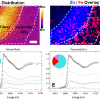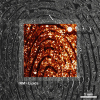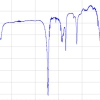Johan Boman
Department of Chemistry, Atmospheric Science, University of Gothenburg, SE-412 96 Göteborg, Sweden. E-mail: [email protected]
Introduction
In urban environments, where the majority of the human population lives, air pollution is a major threat to human health. In many countries and regions of the world, this has led to the implementation of regulations to control the emissions of air pollutants and limits for the allowed concentrations of different types of air pollutants. The limits are set at levels at which harm to the health may occur if the limits are exceeded. One of these pollutants is aerosol particles. In most cases, the environmental quality standards limit is set to a certain mass concentration of particles of a certain size.
The most commonly used size limits are particles having an aerodynamic diameter below 10 µm (PM10) or 2.5 µm (PM2.5). The Swedish air quality standard, based on the European Union EU directive 1996/62/EC and its daughter directives, stipulates that the average annual concentration of PM10 should be below 40 µg m–3. There is also a 24 h limit value of 50 µg m–3. The directives rely on research from which a correlation has been found between the atmospheric content of aerosol particles and their effect on human health. New directives are being implemented and, in these directives, the concentration of some specific trace elements are also regulated. These elements are lead (already implemented), arsenic, cadmium and nickel. These new standards are one reason for studying the elemental content of urban aerosol particles. Another reason is that, by looking at the elemental content together with other atmospheric parameters such as temperature, wind speed and direction, information of the possible source region of the pollutant can be obtained. Aerosol particles arise not only from anthropogenic sources, but also from natural sources. Studies of the elemental composition of the particles may shed light on the influence of both anthropogenic and natural sources.
Analysis based on X-ray fluorescence (XRF) can be based on measuring differences in either wavelength or energy of the elements being analysed. In the examples in this article, energy dispersive X-ray fluorescence (EDXRF) was used. XRF is a fast, non-destructive and quantitative spectroscopic method used for analysis of elements ranging from silicon to uranium, without the need for vacuum or sample preparation. The technique can be used for determining element concentrations in a sample over the range between parts per trillion (ppt) and % quantities. In the total reflection version of EDXRF (TXRF), absolute amounts of picograms of elements can be detected and quantified in minute sample quantities. These properties make XRF spectroscopy well suited for studies of the trace elements in urban aerosol particles.
For sampling of aerosol particles, different techniques can be used, adapted according to the later analysis of the particles. In general, there is a need to limit the size of the collected particles to, for example, PM10 or PM2.5. For particles that are to be analysed by XRF, the size segregation must be combined with the possibility of collecting the desired particles on a suitable substrate. Therefore, the most common methods of size segregation of particles for subsequent XRF analysis rely on the difference in the inertia of moving particles with different sizes. The larger the mass of the particle, the larger the inertia and, thus, a larger resistance to a change in direction of the air flow in which the particle is moving. In the examples given below, the particles have been selected using impaction or centrifugal force depending on the study in question.
This article gives examples where XRF spectroscopy has proven to be an important tool in studies related to atmospheric science.
Spectroscopic instrumentation
Two different XRF set-ups have been used for these studies. EDXRF, based on three axial geometry and TXRF, both aimed at increasing the signal-to-noise ratio. In the three axial geometry set-up, the X-rays from a conventional X-ray tube hit a secondary target. The tube, secondary target, sample and detector are arranged so that most of the X-rays from the tube are removed through polarisation, while the X-rays emitted from the secondary target constitute a well-defined source for the excitation of the elements in the sample. The combined effect results in an increase in signal-to-noise ratio of the measurement. In the TXRF method, see Figure 1, the incident X-rays are well collimated and strike the sample at an angle below 0.1°, resulting in total reflection of the X-rays on the polished sample support. In this way, the distance between sample and detector can also be reduced which, combined with the lack of signal from the sample support, results in an even better signal-to-noise ratio and, thus, reduced detection limits for the elements being analysed.

Particles during an atmospheric inversion situation
This example study1 took place using samples from different locations in Göteborg (57.69° N; 11.98° E), on the Swedish west coast, in February 2005, as part of a larger air pollution measurement campaign, Göte–2005. Göteborg is generally considered to have good air quality, where the legal limits are seldom exceeded. The aim was to study the influence of winter time inversions on the urban air pollution. EDXRF spectrometry was used to determine the concentrations of S, Cl, K, Ca, Ti, V, Mn, Fe, Ni, Cu, Zn, Br and Pb in PM2.5 particles collected in Teflon membrane filters. The size segregation was done using a cyclone separator and the spectrometer was based on three axial geometry. In the laboratory-built spectrometer, the filters can be inserted and analysed directly, without any sample preparation. This is advantageous, since less handling of the samples results in a reduced risk of contamination. By combining the elemental analysis results with the weather parameters and calculated back trajectories, several different air pollution situations were identified proving the advantages of having knowledge of the elemental composition of the particles. As an example, one inversion period could be ascertained where the concentrations of S, V, Ni, Br and Pb did not reach elevated concentration and the conclusion could be drawn that the sources of these elements must be located outside the central Göteborg area. Combined with the back trajectories, possible source regions for S could be identified, see Figure 2.

Particles in a tram tunnel
In a closed environment, such as an underground tram tunnel,2 the concentration of particulate air pollution can reach much higher levels than under outdoor ambient conditions. To study the levels of particle mass, black carbon and elements in the collected particles, samples were collected in the only underground tramway station in Göteborg, Sweden. It is located in the suburban area called Hammarkullen where approximately 6000 passengers use the trams which stop there for commuting to the city centre or to other suburbs. The sample collection took place in June 2007 on the platform from which the trams continue to the other suburbs. This platform was selected since the number of waiting passengers, which might influence the air pollution concentration by, for example, smoking, was less than on the platform to the city centre. During these measurements, a dichotomous virtual impactor was used. It separates the particles into two size ranges, coarse (PM2.5–10) and fine (PM2.5), after the initial separation of particles larger than 10 µm. Teflon filters were used as the sampling substrate. Using the EDXRF spectrometer based on a secondary target of Mo, a total of 14 elements was detected in many of the filters, see Figure 3. Principal component analysis was used to aid in the evaluation of the elemental data together with concentrations of black carbon and sample mass. In this way, the influence from different parts of the tram system were shown. The wear particles and the particles created by the high current in the electric equipment were seen, to a large extent, to be separated in the two size ranges. Although most concentrations were elevated compared to normal outdoor concentrations, it was concluded that the influence on human health was limited, since the time people spend on the platform and in the tunnel is very short.

Particles in an African city
If the air pollution situation can be alarming in cities in developed countries, the situation is, in most cases, even worse in the large city centres of the developing countries.3 In this example, particles were collected in an industrial area of Nairobi, the capital city of Kenya. The city, see Figure 4, is attracting an increasing number of settlers and the infrastructure can no longer keep up with the increased population and the increase in air pollution that follows. Under these circumstances, it is important to locate the different sources of pollutants in order to be able to take appropriate action to improve the urban air quality. That was the aim of the study when particles were collected in the industrial area of Nairobi, using a dichotomous virtual impactor to collect coarse (PM2.5–10) and fine (PM2.5) particles on Teflon filters to determine their elemental content by EDXRF. The concentrations of Si, S, Cl, K, Ca, Ti, V, Mn, Fe, Ni, Cu, Zn, Br, Rb, Sr and Pb were determined using the laboratory-built EDXRF in the Department of Chemistry, University of Gothenburg, Sweden. Of the analysed elements, S and K dominated in the fine particle fraction while Si, Ca and Fe dominated the coarse particle fraction. Using principal component analysis, industrial activities, traffic and biomass burning were identified as the biggest contributors to the particulate air pollution in the area. A positive result of the study was to see that the level of particulate air pollution had reduced compared to previous measurements carried out in Nairobi.

Size segregated particle study
In this study4 the elemental differences in particles of different sizes was the main focus. Samples from central Göteborg in 2006–2007 were collected and separated using a cascade impactor. The impactor separates the aerosol particles into nine different size ranges from below 60 nm aerodynamic diameter to above 16 µm. The impactor was modified to accept sample supports consisting of polished quartz carriers. These carriers could then be introduced directly into the total reflection X-ray (TXRF) spectrometer. The TXRF spectrometer, which is laboratory built, utilises a rotating anode to obtain a maximum power of 18 kW, although the maximum power is rarely used for practical reasons. The X-rays from this very intense source are collimated to a flat beam with a diameter of a few tens of micrometres before being monocromatised by a multilayer. The monochromatic Mo radiation impinges on the sample at a gracing incidence angle of less than 0.1° (Figure 1). By the direct introduction of the sample carrier, the high power input and close geometry of the TXRF spectrometer, very small quantities of the elements in the collected particles can be detected, even in the smallest size range where the total sample mass is only a few micrograms. The elemental composition of the different size ranges made it possible to confirm the influence of several different sources of particles on the collected samples. Sea salt and biomass burning were, for example, identified. Also on the sample set that was collected during New Years Eve, it was also possible to identify the influence of the New Year fireworks! Under normal conditions, the main part of Sr that is found in particles have a size of approximately 1 µm, but during the New Year’s Eve collection, the maximum was shifted to sub micrometre sizes, showing a clear influence of the Sr-based salts used to create the red colour in the fireworks. The study is in its initial stage and further research is needed to correctly quantify the elements directly collected on the TXRF carriers.
Summary
The article gives examples of the usefulness of the X-ray fluorescence technique to address environmental studies involving aerosol particles. Information about the elemental content of particles is essential for a more detailed evaluation of the only non-gaseous criteria pollutant in air quality research.
Acknowledgements
The author wishes to thank the co-authors of the articles summarised in the current article. Financial support from the Swedish International Development Agency (SIDA) is greatly appreciated.
References
- J. Boman, M.J. Gatari, S. Janhäll, A.S. Shannigrahi and A. Wagner, “Elemental content of PM2.5 aerosol particles collected in Göteborg during the Göte-2005 campaign in February 2005”, Atmos. Chem. Phys. 9, 2597–2606 (2009). http://www.atmos-chem-phys.net/9/2597/2009/
- J. Boman, M.L. de Carvalho, M.B. Alizadeh, P. Rezaievar and A. Wagner, “Elemental content of aerosol particles in an underground tram station”, X-Ray Spectrom. 38(4), 322–326 (2009). doi: 10.1002/xrs.1166
- M.J. Gatari, J. Boman and A. Wagner, “Characterization of aerosol particles at an industrial background site in Nairobi, Kenya”, X-Ray Spectrom. 38, 37–44 (2009). doi: 10.1002/xrs.1097
- A. Wagner and J. Boman, “Elemental analysis of size-segregated particulate matter sampled in Göteborg, Sweden”, Spectrochim. Acta B 63(12), 1426–1431 (2008). doi: 10.1016/j.sab.2008.10.010














